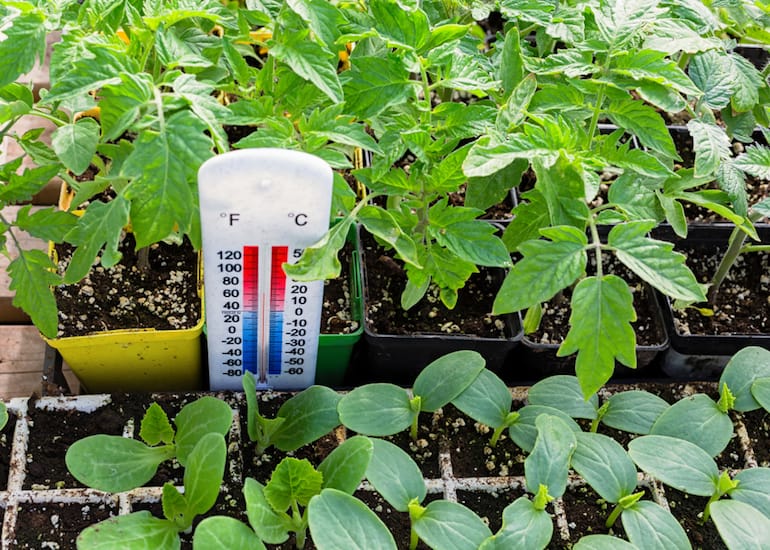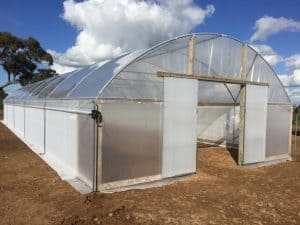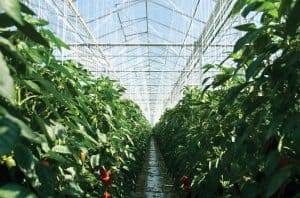Greenhouses are microclimates that help plants thrive regardless of external weather conditions.
For greenhouses to do their job properly, however, a number of factors must be kept in check – temperature and humidty being at the top of the list.
In fact, one of the most common questions most greenhouse owners ask is: what temperature should a greenhouse be?
You’ll find the answer to this question and a lot more in this greenhouse temperature guide.
Greenhouse Temperatures

Ideally, a greenhouse should be between 80 and 85℉. It’s perfect for growing and sustaining almost all types of plants year-round.
It’s worth mentioning that some plants are better at withstanding high temperatures. Known as summer crops, these plants thrive when temperatures reach up to 90℉.
On the other hand, some plants prefer lower temperatures than 80℉. They’re known as cold-tolerant plants and do better when the temperature ranges from 70 to 80℉.
So, while the average ideal range is 80 to 85℉, it’s important to factor in plant hardiness when choosing your ideal greenhouse temperature. It may seem obvious, but stick to growing either summer crops or cold-tolerant plants at one time.
What Causes Greenhouses to Heat Up?

Greenhouses are designed to take in sunlight and convert it into heat. In certain colder climates, greenhouses also require additional heaters.
A problem occurs when temperatures and humidity levels jump to dangerous levels. If they remain too high or too low for too long, it’s like being your plants oven are baking in an oven. These high temperatures stress out the plants and typically result in them wilting and dying.
Maintaining Greenhouse Temperature
The first step in greenhouse maintenance is keeping temperatures steady. To do this, you have to take into consideration several variables, such as:
- What the weather is like where you live
- The types of plants you’re growing
- The number of plants in your greenhouse
There is plenty you can do to keep greenhouse temperatures at an optimal range for your plants. The first step in maintaining ideal greenhouse temperatures is to invest in a reliable thermometer to monitor greenhouse temperatures and humidity levels at all times.
The second step is to use a variety of ways to keep the internal temperature of a greenhouse steady. Below are a few ideas to help you get started.
Ventilation

Allowing airflow to pass through the greenhouse is a sure way to cool it down in a way. Some greenhouses already come with a built-in ventilation system. If yours doesn’t, or if you need a better way to boost airflow, try bringing in some outside air indoors.
If you’re new to the idea of airflow in your greenhouse, then check out this ventilation guide.
Open up greenhouse doors, vents, and windows. It’s a cheap and easy way to bring down temperatures. Just remember to close everything before dusk to help trap in the warmth accumulated during the day.
You can also try an automatic vent opener. It consists of a piston that responds to rising temperatures by opening up the vent. Then, when temperatures drop, the piston contracts, and the vent closes once again.
Fans
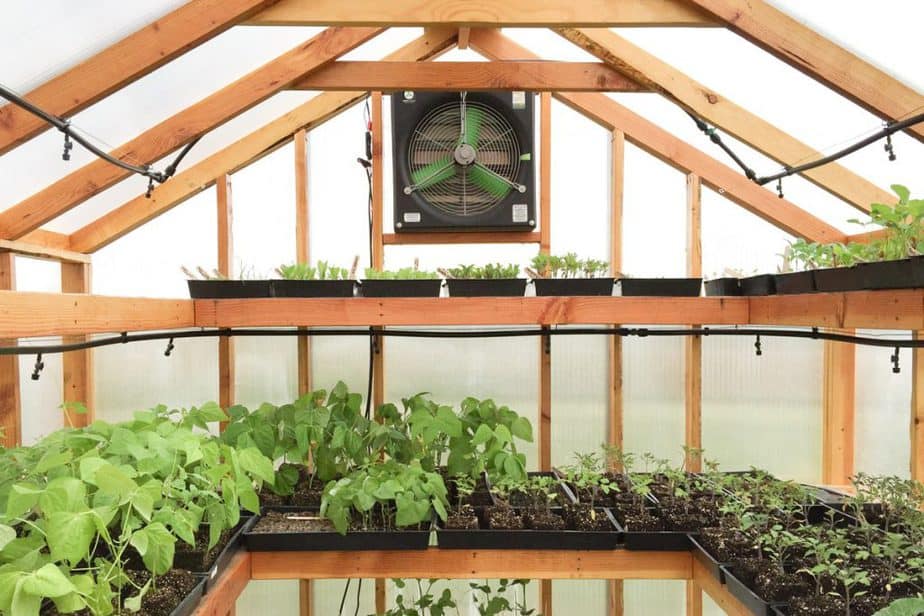
If opening up your greenhouse to allow some airflow isn’t getting the job done, try using fans to create airflow within your greenhouse.
Some fan systems don’t even need electricity to run. You can also try direct-drive fans that run on solar power. These save energy while boosting airflow.
Any type of fan you install will help keep the air moving. In addition, fans also prevent diseases, mold, and pests from spreading inside the greenhouse.
Shading
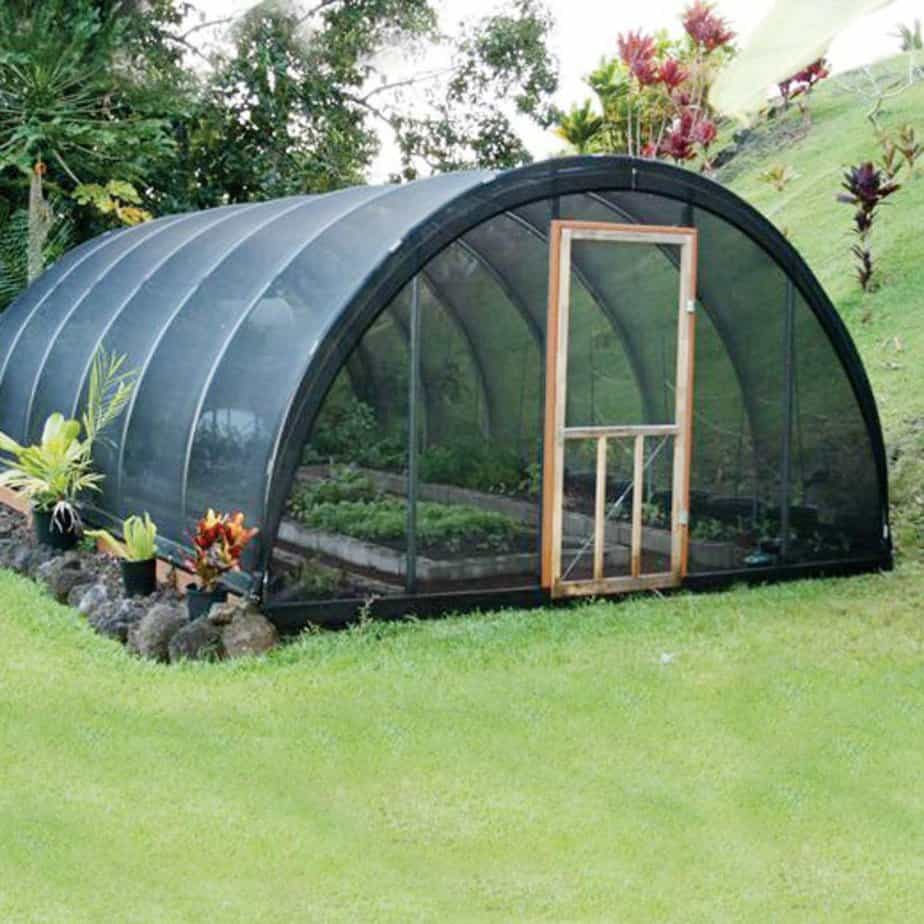
Greenhouse shades are best used between mid-spring and early fall to help keep temperatures between 77 and 81℉. They help prevent heat from spiking in the greenhouse.
The downside is that it also prevents light from coming in. This poses a problem for plants that mainly depend on light to grow and thrive. Therefore, you need to be moderate with your use of shading.
The best type of shading material is mesh. It traps the heat without allowing it to pass through into the greenhouse. At the same time, mesh shading doesn’t impede airflow which results in an un-stuffy greenhouse.
Confused? Read our full guide on greenhouse shading then.
Here are a few examples of shading you can try:
- Grow tall plants that form high canopies is a natural way to shade other plants
- External blinds
- Internal blinds
- Aluminet shade netting
- Shading paints
Humidifiers
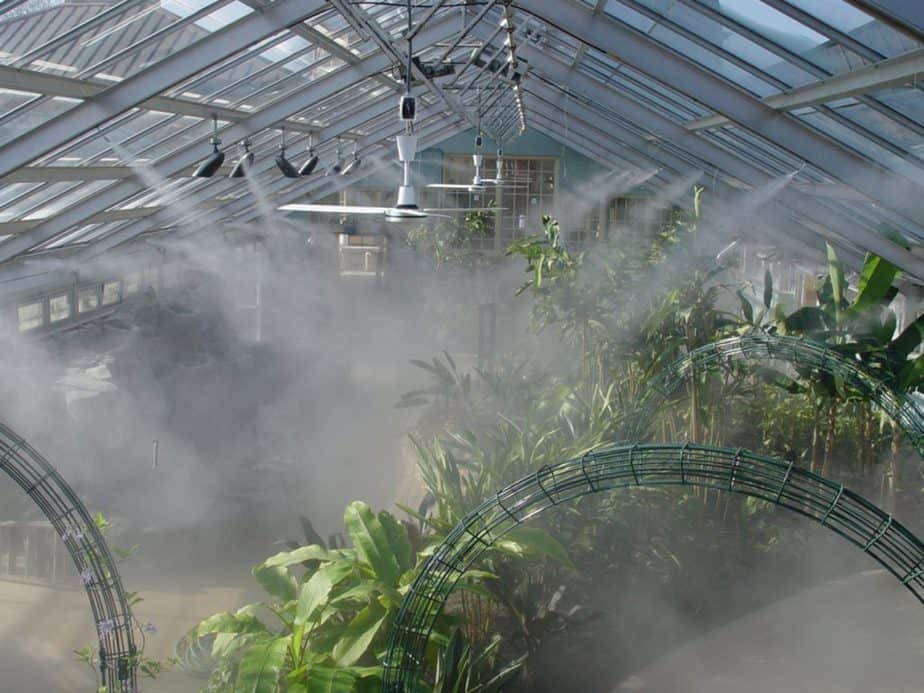
Unless you’re growing cacti, humidity levels in the greenhouse should be at least 50% or higher. You can use either humidifiers or dehumidifiers to help moderate levels if you so choose.
There are several other ways to do keep greenhouse humidity levels in check, such as:
Damping Down
This is done by wetting down pathways, benches, and greenhouse tables. Any hard surface inside the greenhouse should be watered down at least three times a day during the hot months.
Another benefit of damping down your greenhouse is it reduces the risk of pest infestations. No doubt your plants will thank you for that!
Pebble Tray
This is easy and won’t cost you much. All you have to do is place a tray full of pebbles, stone chips, or marbles below the plants. Fill the tray with water until it covers the pebbles. As the water evaporates, it increases humidity levels around the plants.
What Temperature Should My Greenhouse Be?
Whether it’s a hobby or profession, having a greenhouse is a great way to grow your favorite plants all year long. Yet, greenhouses require constant care and attention.
So, what temperature should a greenhouse be? It depends on where you live, what time of year it is, and the types of plants you’re growing.
The methods shared in this article will help you keep the temperature within your greenhouse steady so that your plants are able to thrive throughout the whole year. If you have any questions about what temperature your greenhouse should be then ask away in the comments.

